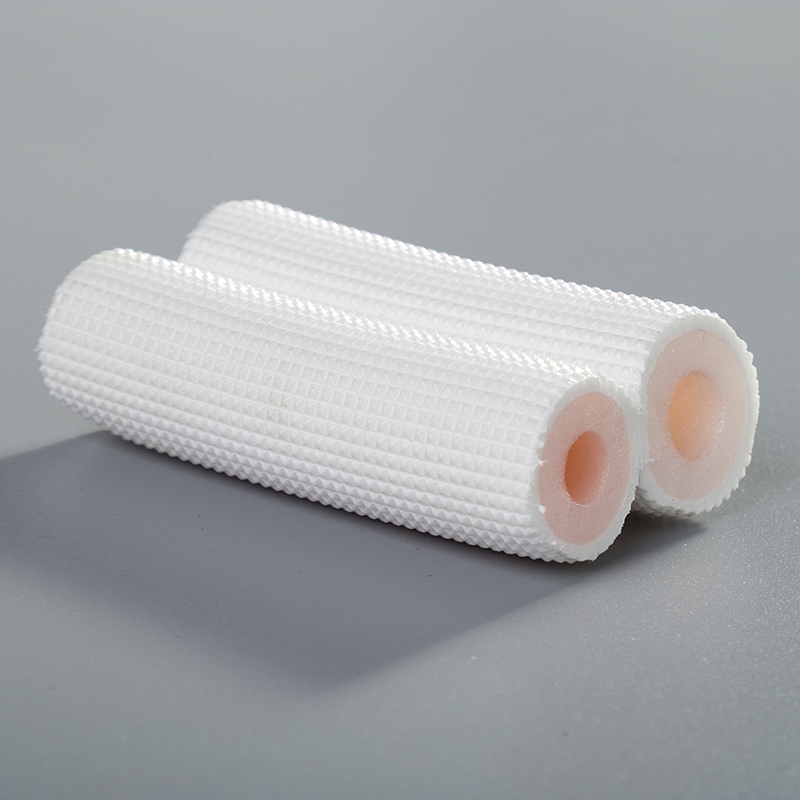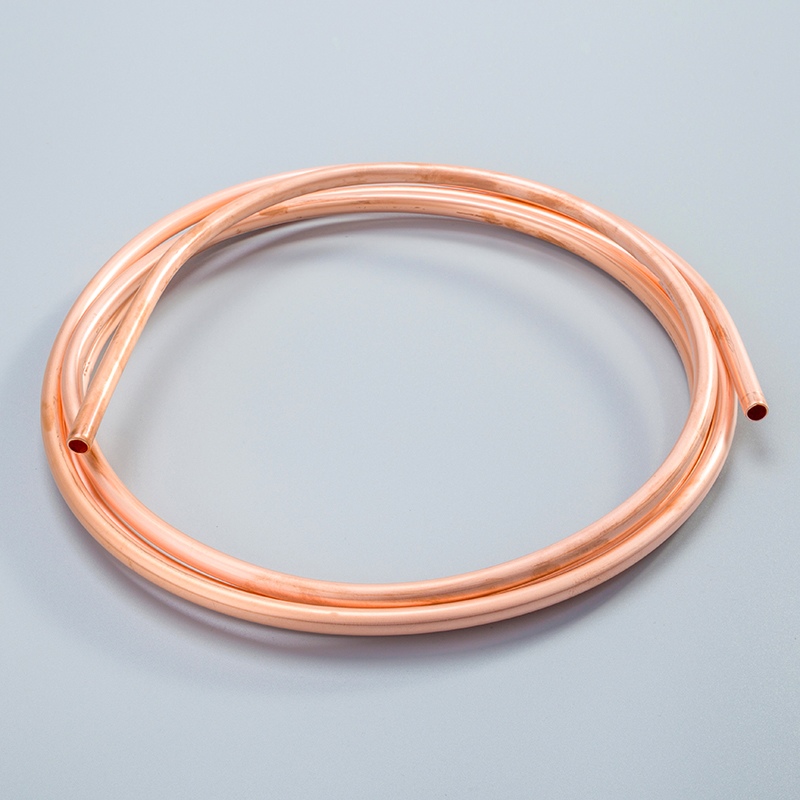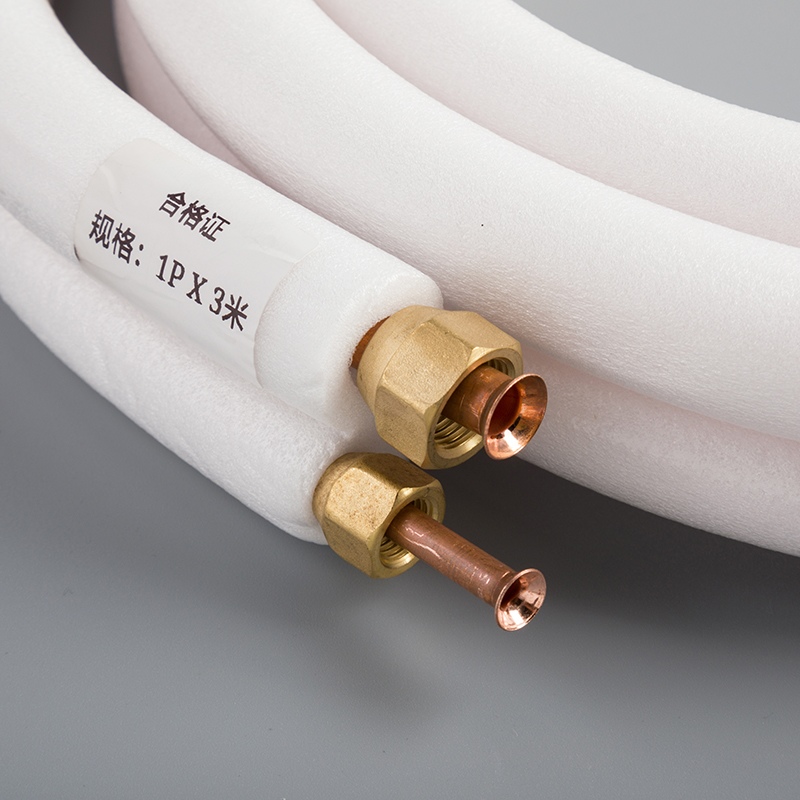How to Choose the Best Copper Pipe for Air Conditioning Systems

Copper pipes play a crucial role in air conditioning systems, ensuring longevity and efficiency. With various types available, such as soft, hard, and ACR copper pipes, selecting the right one is paramount for optimal performance. This blog provides an insightful overview of these copper pipe variations, including air compressor copper pipe, air con copper pipe, and air cond copper pipe, to empower readers with informed decision-making capabilities.
Types of Copper Pipes

Soft Copper Pipes
Copper Pipes are known for their versatility and reliability in various applications. Soft copper pipes exhibit a malleable nature, making them easy to bend and shape according to installation needs. These pipes are commonly used in air conditioning systems due to their flexibility and seamless connectivity with other components.
Characteristics
High Malleability: Soft copper pipes can be easily bent without the need for specialized tools, allowing for customized installations.
Corrosion Resistance: The inherent properties of copper make these pipes resistant to corrosion, ensuring long-term durability.
Thermal Conductivity: Soft copper pipes facilitate efficient heat transfer, contributing to the overall performance of air conditioning systems.
Applications in Air Conditioning
Air Con Copper Pipe Usage: Soft copper pipes are ideal for connecting indoor and outdoor units in air conditioning setups, providing a reliable flow of refrigerant.
Air Cond Copper Pipe Benefits: These pipes support the seamless circulation of coolant, maintaining optimal cooling efficiency within the system.
Hard Copper Pipes
In contrast to soft copper pipes, hard copper pipes offer enhanced strength and rigidity, suitable for specific air conditioning requirements. Their robust construction ensures stability and longevity in demanding HVAC environments.
Characteristics
Enhanced Durability: Hard copper pipes are less prone to damage or deformation, making them ideal for concealed installations or areas with limited accessibility.
Pressure Resistance: The rigid structure of hard copper pipes enables them to withstand high operating pressures common in air conditioning systems.
Longevity: Due to their sturdy build, hard copper pipes have a longer lifespan compared to softer alternatives.
Applications in Air Conditioning
Air Compressor Copper Pipe Usage: Hard copper pipes are often utilized for connecting air compressors in air conditioning units, ensuring consistent airflow and pressure regulation.
HVAC Systems Integration: These pipes play a crucial role in linking various components of HVAC systems securely and efficiently.
ACR (Air Conditioning and Refrigeration) Copper Pipes
ACR copper pipes are specifically designed to meet the stringent requirements of air conditioning and refrigeration applications. Their unique composition enhances performance and reliability in diverse HVAC settings.
Characteristics
Optimized Alloy Composition: ACR copper pipes are engineered with precise alloy ratios that enhance their thermal conductivity and resistance to environmental factors.
Leakage Prevention: The specialized design of ACR pipes minimizes the risk of leaks or breaches, ensuring consistent operation over time.
Compatibility Features: These pipes are compatible with a wide range of refrigerants commonly used in air conditioning systems, promoting versatility.
Applications in Air Conditioning
Refrigerant Flow Management: ACR copper pipes facilitate the smooth circulation of refrigerants within air conditioning units, optimizing cooling efficiency.
Precision Cooling Solutions: The tailored design of ACR pipes makes them suitable for precision cooling applications where accuracy is paramount.
Factors to Consider When Choosing Copper Pipes
Pipe Size
Importance of Correct Sizing
Proper pipe size selection is crucial for efficient air conditioning systems.
Incorrect sizing can lead to reduced performance and potential system malfunctions.
Optimal pipe size ensures the proper flow rate of refrigerants, enhancing overall cooling capacity.
How to Measure
Begin by measuring the inner diameter of the existing pipe accurately.
Use a caliper or a measuring tape for precise measurements.
Consider the required flow rate and pressure levels when determining the appropriate size.
Consult industry standards or guidelines for recommended pipe sizes based on system specifications.
Wall Thickness
Standard Thicknesses
Copper pipes come in different thickness grades, including Type K, L, and M.
Type K pipes have thicker walls than Type L pipes, while Type L pipes are thicker than Type M pipes.
The choice of wall thickness depends on factors such as operating pressure and durability requirements.
Impact on Durability and Performance
Thicker-walled copper pipes offer increased durability and resistance to high pressures.
Opting for the right wall thickness ensures longevity and minimizes the risk of leaks or ruptures.
Consider environmental conditions and installation settings when selecting the appropriate wall thickness for optimal performance.
Compatibility with Refrigerants
Common Refrigerants Used
Various refrigerants are utilized in air conditioning systems, such as R-410A and R-22.
ACR copper pipes are designed without processing oils that may be incompatible with compressor lubricants used in HVAC systems.
Ensuring Compatibility
Verify the compatibility of copper pipes with specific refrigerants to prevent chemical reactions or system failures.
Choose ACR copper pipes for enhanced compatibility with a wide range of refrigerants commonly used in air conditioning applications.
Prioritize compatibility testing during installation to guarantee efficient operation and prevent costly repairs.
Cost Considerations
Price Range of Different Types
Type K, Type L, and Type M copper pipes vary in price based on their wall thickness.
Type K pipes are typically the most expensive due to their thicker walls, offering enhanced durability and pressure resistance.
Type L pipes fall in a mid-range price category, providing a balance between cost and performance with adequate wall thickness for various applications.
Type M pipes are the most cost-effective option, suitable for low-pressure systems where durability is less of a concern.
Balancing Cost and Quality
When selecting copper pipes for air conditioning systems, it is essential to strike a balance between cost considerations and quality requirements.
Opting for higher-priced options like Type K pipes may be warranted in high-pressure environments where durability is paramount.
For standard applications with moderate pressure levels, Type L pipes offer a cost-effective solution without compromising performance.
Type M pipes provide an economical choice for low-pressure systems while still maintaining satisfactory functionality.
Consider the long-term benefits of investing in higher-quality copper pipes to avoid potential issues and ensure the efficiency of your air conditioning system.
Recommended Copper Pipes for Air Conditioning Systems
SWG22 Copper Pipes
Copper pipes, renowned for their durability and corrosion resistance, are essential components in air conditioning systems. SWG22 copper pipes stand out as a top choice due to their exceptional properties that ensure long-lasting performance.
Benefits
High Corrosion Resistance: SWG22 copper pipes are resistant to rust and corrosion, guaranteeing longevity in air conditioning applications.
Optimal Thermal Conductivity: These pipes facilitate efficient heat transfer, enhancing the overall cooling capacity of air conditioning systems.
Reliable Performance: SWG22 copper pipes provide a reliable flow of refrigerants, contributing to the seamless operation of air conditioning units.
Applications
Split System Air Conditioners: SWG22 copper pipes are ideal for connecting indoor and outdoor units in split system air conditioners, ensuring efficient refrigerant flow.
Centralized Air Conditioning Systems: These pipes are suitable for centralized AC setups, where consistent cooling performance is essential.
Type L Copper Pipes
When it comes to reliability and high-pressure applications, Type L copper pipes excel in delivering superior performance. Their robust construction makes them a preferred choice for demanding air conditioning environments.
Benefits
Enhanced Pressure Rating: Type L copper pipes boast a high-pressure rating, making them suitable for systems with increased operating pressures.
Longevity and Durability: These pipes offer long-term durability, minimizing the risk of leaks or ruptures even under challenging conditions.
Versatile Applications: Type L copper pipes can be used in various air conditioning setups, providing flexibility and efficiency.
Applications
Commercial HVAC Systems: Type L copper pipes are commonly used in commercial HVAC installations due to their durability and reliability.
Industrial Cooling Units: These pipes are ideal for industrial cooling units that require robust components to withstand rigorous operations.
Mexflow Copper Pipes
Mexflow copper pipes by Mehta Tubes Limited have gained recognition in the HVACR industry for their exceptional quality and performance. Designed to meet the stringent requirements of air conditioning systems, Mexflow pipes offer unparalleled benefits.
Benefits
Industry-Leading Quality: Mexflow copper pipes adhere to high-quality standards, ensuring reliable performance in diverse HVAC applications.
Efficient Heat Transfer: These pipes optimize heat exchange processes within air conditioning units, promoting energy efficiency.
Corrosion Resistance: Mexflow copper pipes are resistant to corrosion, maintaining their integrity over extended periods of use.
Applications
Residential Air Conditioning Units: Mexflow copper pipes are well-suited for residential AC systems where durability and efficiency are paramount.
Commercial Refrigeration Systems: These pipes find applications in commercial refrigeration setups that demand consistent cooling performance.
Installation and Maintenance Tips

Proper Installation Techniques
Tools Required
Copper Tubing Cutter: A precise tool for cutting copper pipes accurately without causing damage.
Deburring Tool: Essential for removing sharp edges and burrs from cut copper pipe ends to ensure a smooth fit.
Propane Torch: Used to solder copper pipes securely, creating leak-proof connections.
Pipe Bender: Enables the bending of copper pipes at precise angles for customized installations.
Measuring Tape: Helps in accurately measuring and cutting copper pipes to the required lengths.
Step-by-Step Guide
Prepare the Work Area: Clear the workspace and ensure proper ventilation before starting any installation work with copper pipes.
Measure and Cut: Use a measuring tape to determine the required length of copper pipe, then cut it using a tubing cutter for precision.
Deburr the Edges: After cutting, use a deburring tool to remove any rough edges or burrs from the pipe ends for a clean connection.
Clean and Flux: Thoroughly clean the pipe ends and fittings, apply flux to both surfaces, and assemble them together securely.
Solder Joints: Heat the joint area with a propane torch until it reaches the solder's melting point, ensuring a watertight seal between components.
Maintenance Best Practices
Regular Inspections
Conduct routine visual inspections of all exposed copper pipes in your air conditioning system to check for signs of corrosion or leaks.
Look out for greenish stains or moisture around joints as indicators of potential issues that require immediate attention.
Schedule annual professional maintenance checks to assess the overall condition of your copper piping system and address any underlying problems promptly.
Common Issues and Solutions
Corrosion Prevention: Apply anti-corrosion coatings or insulate exposed copper pipes to protect them from environmental factors that can lead to corrosion over time.
Leak Detection: Utilize leak detection tools or dyes to identify hidden leaks in your copper piping system before they escalate into major problems.
Pressure Testing: Periodically conduct pressure tests on your air conditioning system to detect any weaknesses in the copper piping network and address them proactively.
Testimonials:
Copper pipes are highly durable, naturally non-corrosive, and non-toxic compared to traditional piping systems. - Unknown
Copper tubes find wide application in various market sectors, including plumbing, HVAC (heating, ventilation, and air conditioning), refrigeration. - Unknown
In summary, understanding the nuances of copper pipes is vital for optimal air conditioning system performance. Choosing the right type, such as SWG22 or Type L copper pipes, can significantly impact efficiency and longevity. It's crucial to prioritize correct sizing, wall thickness, and compatibility with refrigerants when selecting copper pipes. Homeowners can benefit from regular maintenance checks and DIY HVAC tips to ensure system reliability. Consulting professionals for expert advice on copper pipe selection is always advisable to guarantee seamless operation. Remember, making informed decisions about copper pipes is key to maintaining a comfortable home environment while staying within budget constraints.
See Also
Benefits of Opting for Copper Tubing in Air Conditioning
The Importance of Copper Piping for Effective Air Conditioning
Key Ways Copper Tubing Transforms Air Conditioning


